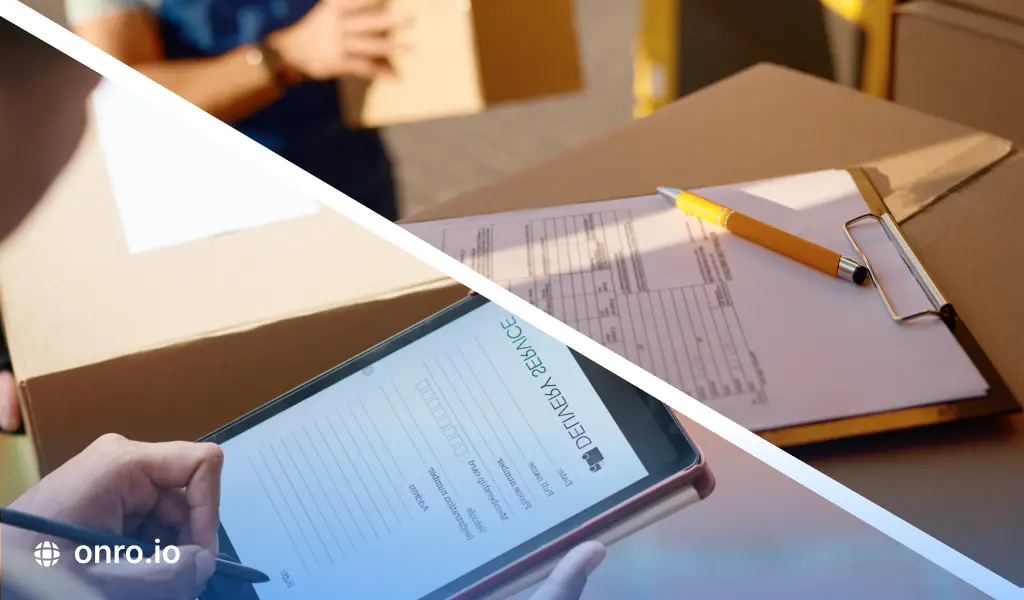Detecting delivery costs is essential for courier and delivery businesses because they wouldn’t be profitable enough or cost-optimized if they don’t reduce the costs of the delivery management. To minimize delivery expenses we must break down the delivery costs first. The costs of delivery may vary depending on your business and the types of delivery you handle.
In this article, we will investigate delivery costs in general. We’ll try to show you which parts of the delivery process might charge you in major. Furthermore, we will offer some solutions to reduce them.
Onro offers advanced delivery management software that allows you to reduce delivery costs while boosting your customer expectations. Test our free demo to see how Onro can help your business.
Try Onro for Free
Get your free access to the Onro All-in-one Delivery Management Software.
What Are the Key Components of Delivery Costs?
Before starting the process of optimization of the delivery management, you should identify the most important delivery costs. Here are the most important of them:
1. Delivery Costs of Drivers
Fleet and drivers can charge you as the most expensive part of your business. Depending on which driver’s working type you are using to communicate with drivers, it varies. There are two driver working type:
Independent Contractors (Freelance Drivers) Working Type
If you collaborate with independent contractors (freelance drivers), you are not responsible for covering the costs and expenses related to the car, fuel, insurance, and so forth. Instead, you should compensate your drivers through commissions. They will earn these commissions based on the orders they fulfill.
Hired Driver Working Type
When you employ hired drivers, you assume responsibility for covering various expenses, including those associated with the vehicle, fuel, insurance, and other related costs. In return for their services, you typically pay hired drivers a fixed wage or salary, regardless of the number of orders they complete.
2. Cost of Staff
When you have hired employees, you will pay for costs like salaries, benefits, taxes, and other related expenses for roles like dispatchers, administrators, and support. These employees receive a fixed monthly package, and their costs are part of the overall operating expenses of your business.
The cost of staff varies based on your business type. For example, if you have a courier company and receive orders through the calls, you probably have a call center for managing the orders. But if you don’t get the orders through the calls, and your customers register their orders using the applications or APIs directly, you only need to provide support, and this will decrease the number of staff in the call center.
3. Office and Equipment
Equipment and resources used in your office are other parts of your costs. Equipment settings to support various tasks like managing calls, software, drivers, and orders, can vary depending on your scale of business. Some of the most important of them are:
- Office Rent and Furniture
- Computers
- Voip System
- Internet Connection
- Software
4. Packaging Cost
Packaging cost includes expenses such as boxes, tape, and padding, as well as designing and printing custom packaging. Labor costs related to packing are also part of this. Your business model dictates whether packaging is a part of your operations.
For instance, if your focus is on courier services, your responsibility lies in the transportation and delivery of goods, which typically means you’re not directly involved in the packaging process. On the other hand, if your business is e-commerce services, packaging becomes a critical aspect as you’re responsible for preparing products.
5. Technology Costs
Today, the use of technology for businesses can lead to their rapid growth. It can even be said that you cannot compete without using it. Technology has also played a very important role in the field of delivery. However, the use of technology has costs that should be considered in the delivery costs.
Although the use of technology costs money, if the right solution is considered, it can significantly reduce your entire business costs. In the rest of the article, one of the best practices to reduce delivery costs by using the right technology is investigated.
How Software Can Reduce the Delivery Costs?
By leveraging the capabilities of software, delivery businesses can reduce delivery costs while improving the overall quality of service. A robust delivery management software offers a suite of features aimed at cost reduction. Some key features include:
1. Route Optimization
With the power of route optimization, the best routes will be selected. For example, if you assign 20 drop-offs to a driver, the route optimization algorithm calculates the best routes and prioritizes them to be done by the driver. This feature minimizes fuel costs and delivery time. Your drivers will be able to work efficiently, resulting in reduced delivery costs.
2. Real-Time Tracking
Real-time tracking provides visibility of delivery drivers that enables you to monitor better and makes you able to avoid delays. Real-time tracking powers your dispatchers and calls center to manage the order process in real time.
3. Automation
There are different processes in the delivery journey that can be automated and reduce the delivery costs. These are some of the most important of them:
Order Dispatching
Automating the dispatch process has the potential to significantly lower delivery costs by enhancing operational efficiency and reducing the need to hire manual dispatchers.
Driver Registration
Working with drivers requires organizing new drivers. The process of registration of the drivers can be automated with the power of driver application. This can reduce your costs.
Accounting
Accounting is one of the tasks that can be challenging without powerful tools. When you utilize delivery software to manage your business, it can facilitate automatic withdrawal processes and streamlining your financial operations.
4. Communication Tools
Leveraging communication tools that enable automated emails, SMS, and notifications to be sent to both your clients and drivers can contribute to reducing delivery costs. These notifications can send the link to the tracking page to the customers. They will track their orders in real time. This visibility will reduce the calls and support.
5. Paperless Operations
The proof of delivery system eliminates the need for paper and digitizes essential documents. Through the driver app’s POD feature, drivers capture photos, signatures, and notes for each drop-off. This feature is replacing traditional paper-based documentation. This not only enhances accuracy and accessibility but also eliminates the associated costs of paper usage.
6. Customer Service
Customer applications or APIs empower delivery businesses to receive orders directly from their customers. This component can reduce the reliance on call centers. Customers can register their orders directly through a web portal and have complete control over managing their orders. This streamlined process not only enhances customer convenience but also contributes to cost reduction by minimizing the need for call center operations.
Final Thoughts
The modern landscape of delivery management is ripe with opportunities for cost reduction and enhanced efficiency through the strategic adoption of technology. From automated dispatch systems and real-time tracking to digital proof of delivery and communication tools, businesses now have the means to optimize operations and minimize delivery costs.
Onro offers software solutions that help your business to reduce delivery costs. Get your free demo to see how our solution can help your business.
Try Onro for Free
Get your free access to the Onro All-in-one Delivery Management Software.



